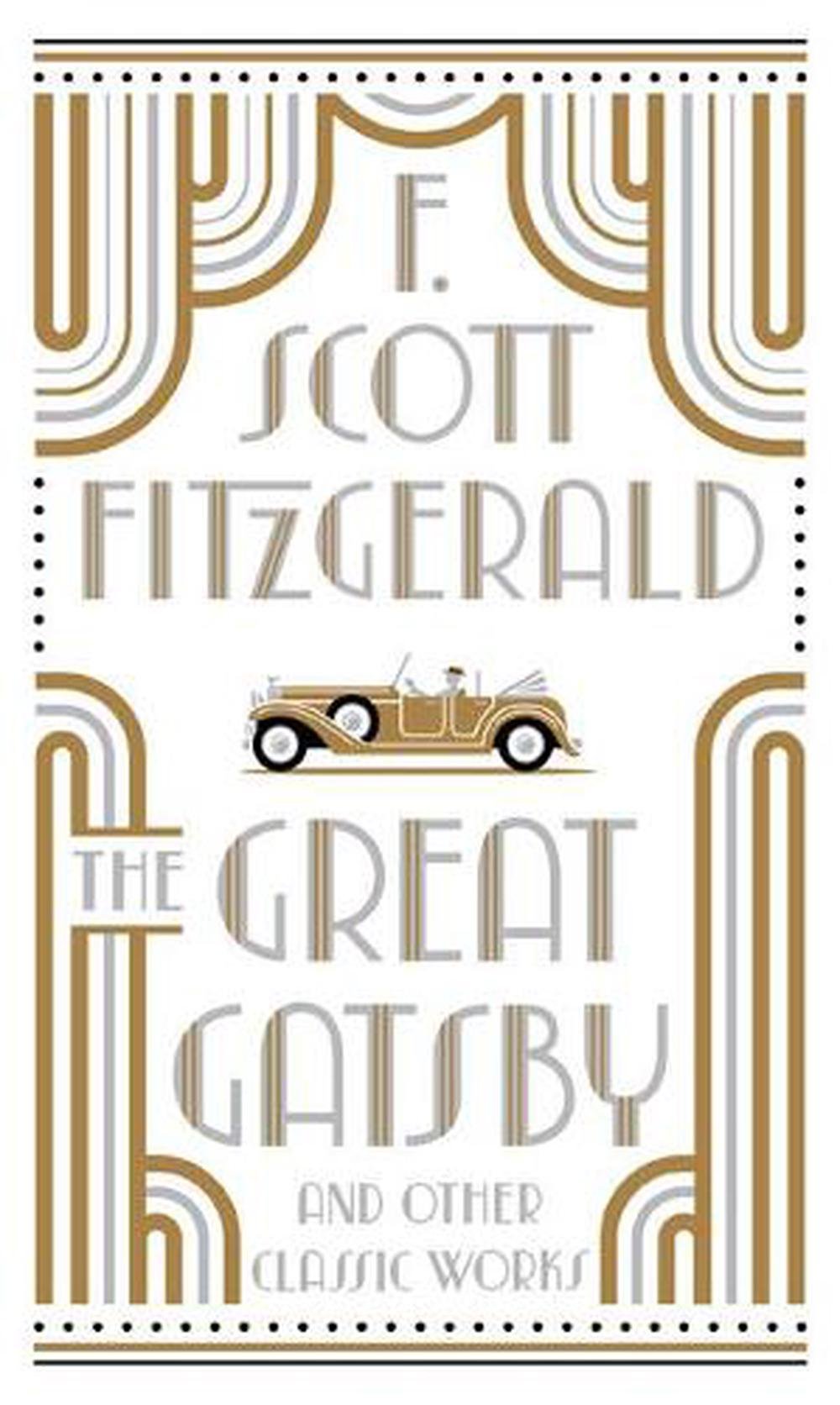F. Scott Fitzgerald
The Great Gatsby
The Great Gatsby
Couldn't load pickup availability
Susan's Review
It’s one hundred years since the publication of F. Scott Fitzgerald’s modern classic The Great Gatsby: an anniversary worth celebrating for the novel’s scathing ethical critique of1920s hedonism and money values; its portraits of ruthless amorality; and the elegance of its prose. Set just before the Stock Market crash of 1929 and the onset of the Great Depression, the novel reveals the moral impoverishment of the ‘get rich quick’ mentality of the age. As such, it is also a lament for the loss of the American Dream: the belief of the nation’s Puritan founders that hard work, integrity and initiative would create success and prosperity. As well as being of its time, The Great Gatsby continues to speak to modern readers. What could be more relevant for us than the novel’s criticism of obscene economic and social inequality, toxic masculinity and a romantically naive belief in the self-made ‘man.’
At the heart of this provocative and melancholy story is the titular Jay Gatsby, who until the belated revelation of his origins, remains the product of rumour and speculation. Was he a war hero? A gangster? An Oxford-educated intellectual? What is clear, however, is that he is so called ‘New Money’; his enormous wealth is newly (if mysteriously) acquired rather than the inherited Old Money. As such, while New York society is only too willing to enjoy his lavish parties, he is disdained by his Old Money romantic rival Tom Buchanan – surely one of literature’s most chilling studies in the destructiveness and hypocrisy of the self-entitled rich. Gatsby is also ultimately rejected by the New Money woman, Tom’s wife Daisy, with whom he has long been in love. But Gatsby is never under any illusions about what she represents. As he tells Nick Carraway, the narrator of the story, in one of the novel’s most telling lines: Daisy’s voice “is full of money.” It is she for whom he has accumulated his wealth in the hopes of winning her love; and his failure to do so is a pointed recognition of a deeply entrenched class system based on the source of one’s wealth. It’s one of the novel’s most poignant ironies that Gatsby recognises the essential hollowness of his romantic desire.
The novel’s progressive disillusionment with money values is seen through the eyes of its narrator, Nick Carraway. An essentially decent man from the American mid-west, Nick is gradually seduced and corrupted by the high life to which he is introduced by Gatsby, but gradually comes to recognise the brutality of the sophisticated rich. He sees that Tom and Daisy are “careless people [who] smashed up things and creatures and then retreated back into their money or their vast carelessness or whatever it was that kept them together, and let other people clean up the mess they had made.” The “mess” includes the literal deaths of three people, deaths for which the Buchanans take no responsibility. Overcome by a sense of disgust, Nick returns to his mid-western origins and, by implication, to the site of the hard work and integrity he renounced.
While The Great Gatsby has long been read as a social criticism and a doomed romance which creates sympathy for the exploited Jay Gatsby, more recent interpretations have complicated the picture. To what extent is Nick’s sympathy for Gatsby tainted by his refusal to acknowledge Gatsby’s covert criminal behaviour? Is there an element of homoeroticism in Nick’s attraction to Gatsby (and indeed to Tom Buchanan)? Is there an element of misogyny in the novel’s categorisation of women as either whores (Tom’s mistress Myrtle Wilson) or Madonnas (Daisy), and in Daisy’s status as a ‘prize’ to be won by competing males?
The Great Gatsby remains ‘great’ by virtue of these different interpretive possibilities. Like all works of classic literature, its meanings are inexhaustible. What’s also unarguable is the novel’s stylistic poise. As a former student of mine breathlessly announced, waving her copy of the novel: “I’ve just read the best sentence in the world.” Evocative, elegant, blending compassion and moral revulsion, jadedness and a tentative sense of hope, the novel remains an aesthetic triumph.
It's now available in a handsome hardback edition to commemorate its centenary, as well as in the usual paperback format.
Publisher Review
No writer portrayed America's Jazz Age as vividly as F. Scott Fitzgerald. In his effervescent tales of ingenues on the prowl for husbands, Ivy League heirs en route to futures of idle entitlement, and endless alcohol-fueled dance parties at ritzy country clubs, he limned a culture giddy with excess and as reckless as it was refined. Gifted with remarkable powers of observation and a witty way with words, Fitzgerald wrote stories that seem as fresh and modern today as they did when published a century ago.
This Great Gatsby and Other Classic Works features Fitzgerald's first two published novels-This Side of Paradise and The Beautiful and Damned-and 19 short stories, including the classics "Bernice Bobs Her Hair," "The Diamond as Big as the Ritz," and "The Curious Case of Benjamin Button." The volume also includes Fitzgerald's landmark short novel The Great Gatsby.
First published in 1925, this tale of the enigmatic Jay Gatsby and his unrequited love for Daisy Buchanan has been read for decades as a parable about the American Dream. It is regarded as one of the greatest American novels of the twentieth century. This Great Gatsby and Other Classic Works is one of Barnes & Noble's Collectible Editions classics. Each volume features authoritative texts by the world's greatest authors in an exquisitely designed bonded-leather binding, with distinctive gilt edging and a ribbon bookmark. Decorative, durable, and collectible, these books offer hours of pleasure to readers young and old and are an indispensable cornerstone for every home library.
Share


